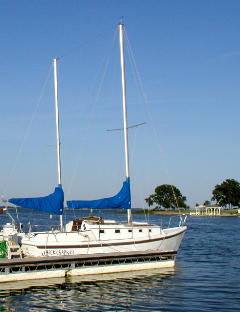
"Someday, when I can afford it, I'll own a real cruising yacht." "Sure, I'd like to sail in exotic places, but some don't have boats to charter -- and where they do, it's too expensive -- but maybe someday...." Luger Voyager 30 Catalog 1986 The Chickcharnee, a 1985
|
1986 Luger Catalog Voyager 30 ExcerptA Trailerable 30-FooterFind yourself hoisting wishes more often than sails? Well, dream no longer. With Luger's trailerable Voyager 30, your "someday" is now. Available with either a sloop or a ketch rig, your Voyager has all the sailing performance demanded by a water-wise skipper plus the comfort and convenience expected by a family crew. Designed by the well known and long established West Coast design firm of Edwin Monk & Associates in collaboration with the Luger staff and Eric White (designer of the Morgan Out Island series of cruising sailboats), Voyager qualifies for the Midget Ocean Racing Club. The M.O.R.C. was formed in 1954 and is for small racing and cruising yachts, maximum 34 feet. The Voyager also qualifies for documentation (a titling/registration procedure administered by the U.S. Coast Guard). Voyager's 6'4" headroom and comfortable live-aboard accommodations make her a real sailing home. Unique features -- shoal draft (only three feet with centerboard up), optional inboard motor, an 8-foot trailerable beam -- all at extremely low cost, put the Voyager in a class by herself. That's right, because Voyager has an 8-foot beam, you can trailer her anywhere, at any time, without the hassle of special permits and restrictions on routes, traveling times and dates. With your trailerable Voyager, you're always ready to answer the call of far away cruising grounds. For you, new sailing adventures are hours or, at most, just a few days away. Your Voyager makes your "somedays" now. And it is easier than you might think to own the Voyager. The "Luger Concept" of manufacturing top-grade pleasure craft in easy-for-anyone-to-complete form and marketing them factory-direct brings the Voyager to you at about half the cost of a comparable factory-finished vessel. Luger performs all the fiberglass molding and supplies precut, preformed, and sub-assembled cabin interior components easily installed by you. By adding the finishing touches to your Voyager, you save the high cost of factory labor and overhead. And, the price of your Voyager doesn't include any mark-ups customarily incurred in the usual factory-to-dealer distribution system. You're at the helm of your Voyager with savings of $20,000 to $30,000. And, as with all Luger boats, you have the priceless pleasure of exclaiming to your admiring friends -- "And I built her myself." |
Voyager FeaturesYour Voyager is fun to sail and beautiful to behold. Because her outboard mounted rudder places the tiller farther aft, there's plenty of room for movement in the cockpit with ample space for six or more adults. Chair-height seating with deep contoured backrests provides both comfort and security. When seated at the tiller, the skipper's view forward is unobstructed by the cabin. For single-handed sailing, winches, cleats and other gear for sail trimming are mounted on the Voyager's wide cockpit coaming, within easy reach of the helmsman. Scuppers (drains) molded in the cockpit footwell carry rain and spray overboard. All surfaces in the cockpit used for sitting, standing and walking have molded in, nonskid surfaces for safe sure footing, whether conditions are wet or dry. The sliding companionway entry hatch is fitted with a molded fiberglass spray hood. The storage locker in the cockpit seat provides access to the huge space beneath the cockpit -- perfect for storage of sails and other bulky items. Like all hatches on the Voyager, this hatch locks securely. A hatch in the cabin roof provides excellent ventilation, and "topside" your Voyager is arranged for easy on-deck working. The wide walk-around side decks lead from the cockpit to the uncluttered foredeck, and all surfaces have molded-in nonskid finish. Like all large yachts, your Voyager has molded-in bulwarks extending from the bow to the cockpit coaming. The bulwark shape provides extra strength to the hull-deck connection and sure footing when working on deck. For convenience in handling and storing the anchor, your Voyager has a large, molded-in anchor locker at the bow. The locker accommodates anchors up to Danforth No. 13S (the recommended working anchor for your Voyager) plus 500 feet of 1/2" line. The locker has a built-in overboard drain and locks securely. |
Live Aboard LuxuryTo live aboard. It's a goal of many who handle the tiller of a sailing vessel. The "Luger Concept" of a low cost, do-it-yourself, trailerable 30-footer make the dream of extended cruising an affordable reality for you, your family and friends. Cruise and live aboard your Voyager for days, weeks or months -- even years! Your Voyager is a live-aboard vessel in every sense, and that quality is evident throughout. You'll be impressed by your Voyager's 6'4" cabin headroom. Even a quick glance tells you the Voyager layout is efficient. For example, the winch for controlling the retractable centerboard is located behind a quick-opening panel -- out of the way so it won't interfere with movement in the cabin, but handy and ready to use. The settee and the dinette seating area make a delightful conversation grouping, and the galley is located aft where it's handy to the cockpit. The Voyager's navigation-communication center is where it should be -- just inside the cabin, near the helm. And a unique bi-fold door arrangement provides privacy in the stand-up head. The standard Voyager layout sleeps six comfortably, but with slight modification she accommodates seven or more. The forward cabin sleeps two, the convertible dinette makes into a double berth, and the settee and quarter-berth each make a comfortable bunk for one. If needed, the settee can be converted into a pull-out double sleeper, adding a seventh berth. A vessel designed for extended cruising must have adequate storage space, and this the Voyager has. Generous storage areas are located throughout your Voyager. All space available for storage is wisely used -- no space is wasted. The cabin interior is planned and arranged so when completed, all exposed wooden surfaces are genuine mahogany. (Other materials are used only where they are hidden from view in the finished craft.) Features of your sailing homeThe Voyager's galley promises to be your mate's delight. The L-shaped counter has convenient wrap-around work space and, when needed, the fold-up drop leaf provides additional counter space. There's plenty of room for a counter top or a built-in stove and a sink. The counter top extends aft 18 inches under the cockpit and over the big six-cubic-foot insulated, molded fiberglass icebox. The icebox is easily accessible through an opening in the counter top. Below the sink and stove is generous space for galley provisions and supplies. Bins at counter top level extend along the side of the hull and aft under the cockpit seat providing ample storage for plates, cups and glasses and other essential galley paraphernalia. Windows provide galley hands with a picture postcard view of every anchorage plus plenty of natural light. Because the galley is near the cockpit and the settee/dinette conversation area, Voyager galley hands are never far from the action. The Voyager's 6'6" quarter-berth makes an especially comfortable berth for one. It has a huge storage space below and a convenient full length shelf above extending aft from the navigation station. The forward end of the quarter-berth serves as a chair-height seat for your navigator. The navigation-communication center is located at the after end of the cabin, close to the helm. Designed to serve the needs of the cruising yachtsman, the center provides ample workspace for plotting courses and communicating with other vessels. Radio gear mounts on the bulkhead or under the wide walk-around side deck. There's plenty of storage below the table for a large inventory of nautical charts, plus a large lift-up tray in the table top for stored navigation instruments. An additional shelf along the hull side holds more navigation gear, and there's even a convenient rack for binoculars, sextant and navigation manuals. Comfortable chair-height seating is on the end of the quarter-berth and a large overhead window provides your navigator with plenty of natural working light. The folding table leaf quickly drops out of the way for easy access to the quarter-berth. Like all seating in your Voyager, the settee has ample storage beneath the seat plus bins for additional storage behind the back cushion. There's also a full length shelf along the side of the hull near the top of the seat. The 6'6" settee seats three to four persons and together with the dinette makes an ideal conversation grouping when visiting sailors come aboard to admire your Voyager. The standard settee sleeps one, but the seat is easily modified into a pull-out bunk, converting the settee into a comfortable, double-wide berth. Your Voyager's convertible dinette seats four at mealtimes and at bedtime makes a cozy sleeping nook for two. Lift the bottom seat cushions, and you find generous storage. For smaller items, bins are located behind the forward seat cushion, and items you want close at hand are placed on the convenient bookshelf along the hull side. Just forward of the dinette is a large hanging locker with convenient access from the passageway. Voyager's centerboard is raised and lowered by means of a "safety-brake" winch concealed behind an opening panel in the galley counter extension. The panel swings out for easy access to the winch and closes to conceal the winch from view. The unique "safety-brake" winch is easily operated and instantly locks the raising-lowering cable when the handle is released. Storage space under the cockpit is accessible through the hatch in the cockpit seat or from the quarter-berth. The forward cabin with 6'2" headroom and a 6'6" V-berth sleeps two with comfort and privacy. Bulky items store under the V-berth and your clothing hangs in the forward cabin's private hanging locker. Personal items fit conveniently on shelves along the hull sides, in the forepeak locker and in the additional locker at the bulkhead. Plenty of natural light is provided by a port-light on each side. The unique bi-fold door system on either side of the adjacent vanity/head compartment separates the forward cabin from the main salon. The bi-fold doors can be arranged to include the vanity/head in the forward cabin or in the main salon or isolated from both. Headroom in the vanity/head area is a full 6'2". (If a taller skipper wants more headroom here or in the forward cabin or main salon, Voyager's cabin flooring can be lowered a few inches.) The hatch in the cabin roof provides ventilation to this area. The head has extra storage space below the toilet, in a lift-out bin behind the toilet and in lockers under the walk-around side deck. The Voyager toilet accessory has an on-deck pump-out system which meets all legal requirements for discharge from watercraft. The vanity has substantial storage in its base with additional storage in the bin and shelf above the counter. |
A Blend of the BestA trailerable 30-footer! An exciting new dimension to your sailing activity, but when Luger architects designed your Voyager, they didn't stop there. Voyager has proven design features every experienced sailor wants -- many never before brought together in a single boat -- plus some unique features all her own. Convenient to sail, built of only the highest quality materials and above all, designed to provide maximum safety and security for your crew, Voyager is yours for about half the cost you'd expect. The secret? The "Luger Concept" of boat building. We do the designing, engineering and precision fiberglass molding. You do the easy-for-anyone-to-complete assembly using precut, preformed and sub-assembled components provided by Luger. By putting the finishing touches on your Voyager, you save $20,000 or more against the price of a completely factory-finished boat. Successfully completing your new Voyager requires no previous boating or boat assembly experience. No special skills are required other than an average knowledge of ordinary household tools. When you take delivery of your Voyager, her hull and superstructure are joined by stainless steel bolts a 4-foot intervals. You seal the hull and superstructure permanently with fiberglass bonding material supplied by Luger. All bonding is done inside the boat where it is completely concealed. Following the nontechnical, pictorial Voyager manual, you next complete the cabin interior using Luger supplied precut, preformed and sub-assembled component parts. After installation of the retractable centerboard, deck hardware, mast and boom, you're ready for luxury sailing. The all-fiberglass hull and superstructure of your Voyager are manufactured using the same hand-crafted lay-up and the same materials used by manufacturers of other high quality (but more costly) factory-finished fiberglass boats. Your Voyager is constructed using alternate layers of hand-laid fiberglass matt and woven fiberglass roving. End grain balsa is molded in and reinforces the hatches, deck and cabin top and cockpit seats and footwell. Additional reinforcing in the form of extra thickness is used to provide more strength where deck hardware, bow and stern rails and life line stanchions are thru-bolted and in other areas of high stress such as at the bow, transom corners and in the keel cavity. Because fiberglass is immune to weather, you can take delivery of your new Voyager any time and store her until you're ready to begin. Most Voyager owners complete their boats right out in the open in their driveways or backyards. Inside and out, only quality materials are used in the Voyager. Metal parts are corrosion-resistant materials. Bolts and screws are stainless steel and are the only fasteners used -- no nails, pop-rivets or staples. Deck hardware is stainless steel or anodized aluminum and aluminum castings (such as those at the head of the mast and ends of the boom) are ALMAG 35 -- a high quality, corrosion-resistant alloy specifically developed for conditions of stress. Mast and boom are extruded from high quality 6063-T5 aluminum alloy, widely accepted as the ideal alloy for sailboat spars. When you've completed your Voyager, you have both a beautiful boat of high quality materials and a convenient and seaworthy sailer. Voyager design features include trailering, easy rigging, a unique auxiliary power system and a ballast, retractable centerboard. Voyager's centerboard is operated by a "safety-brake" winch just inside the companionway. Advantages of a retractable centerboard include trailering and the freedom to maneuver in shallow water. Draft of the Voyager with the centerboard up is just three feet, and the centerboard rides up and over unexpected underwater obstructions. The centerboard offers an additional means of trimming your Voyager. With a boat having a fixed keel, a skipper is limited to adjusting the sails to trim his craft. With your Voyager, adjusting the position of the centerboard (in addition to trimming the sails) equalizes the pressure on the rudder and makes the helm self-tending. Another major criterion of Voyager design is safety. For example, molded-in bulwarks border the large, uncluttered foredeck and walk-around side decks and provide safe, sure footing when handling the headsails. Nonskid surfaces are factory molded into the foredeck, cabin top and side decks and into the cockpit seats and footwell providing a sure-grip surface whether conditions are wet or dry. Your Voyager is as stiff and resistant to heeling as many boats with broader beams and more ballast. The secret is in the design of the Voyager -- a broad hull with a slightly turned bilge and a broad transom stern. Stiffness is further increased by the Voyager ballast arrangement -- ballast placed along the entire length of the keel cavity with substantial additional ballast in the centerboard where it rides low in the water and does the most good. Voyager is self-righting. Even if knocked down flat by extremely rough conditions, she rights herself immediately. When the wind pipes up, jiffy reefing of the mainsail (mainsail is equipped with reef points) enables you to reduce sail quickly and safely. Auxiliary powerEven a sailing purist finds occasional need for auxiliary power, and Voyager offers you the choice of conventional inboard diesel power or a unique inboard mounted outboard motor. The Voyager's layout provides for installation of inboard diesel power in the space under the cockpit. There is more than enough room for any diesel suited to powering the Voyager, plus plenty of space around the engine for "easy access maintenance." Voyager's unique inboard mounted outboard motor looks and operates like an expensive inboard diesel, but it's less costly, quicker to install and has widespread service availability. Located in the stern compartment at the after end of the cockpit, the outboard motor is concealed by a securely locking hatch that doubles as a cockpit seat. Your outboard's prop is ahead of the rudder for positive steering control and when not in use the motor raises clear of the water on a sliding mount to eliminate drag and reduce exposure to salt water. The outboard motor compartment is completely isolated from the Voyager hull interior by a water and vapor-tight bulkhead. Below decks, Voyager is much quieter than boats equipped with conventional inboard power. The motor compartment is ventilated, and shelves inside the compartment on either side of the motor store batteries, up to four standard six-gallon fuel tanks and other items. The motor is operated through the motor hatch or with outboard remote controls. TraileringTrailering, almost unheard of in 30-foot boats, is a Voyager plus. With your new Voyager, sailing horizons are practically unlimited. Load and launch your Voyager much like a small powerboat. You can stand the rig before or after the boat is in the water. To launch, back the trailer down the ramp until the boat floats free. Using a line attached to the towing eye, bring the boat to a nearby dock. In some circumstances, a tongue extender is necessary to place Voyager far enough behind the towing vehicle so she floats free. (Luger provides information on how to easily make and use the extender.) To load Voyager, back the trailer into the water and float the boat over and onto the trailer using your auxiliary power or a line affixed to the boat's bow. The boat support system automatically guides and centers the Voyager into proper trailering position. Secure the bow with the trailer winch and off you go. With the specially designed Luger trailer, your Voyager tows easily at freeway speed behind any full-sized car having either manual or automatic transmission. The trailer's three axles provide excellent balance, greatly reducing tongue weight on the towing vehicle. Full-sized automobiles are well suited for towing and launching your Voyager. However, they usually have insufficient traction to retrieve the boat from the water. Under such circumstances, use a vehicle commonly employed at marinas for handling boats of the size. Without the Luger Mast Raising-Lowering System (No. 3023), the mast is raised manually by three or more persons, or it can be set in place using cranes customarily found at marinas. However, using the Mast Raising-Lowering System, standing the rig is a one-man operation. To lower the mast, first remove the boom (takes only an instant -- no tools required) and then disconnect the forestay at the bow of the boat. The backstay and side shrouds remain connected to the mast and boat and require no readjustment to resume sailing. Give the mast a slight push to get it over center and then continue to pay out the line as the mast descends. The system stabilizes the mast from side sway. The base of the mast is securely locked in the hinged tabernacle fitting on the cabin top. When the mast is fully lowered, one person easily moves it forward into trailering position. With the ketch rig, a second person is required to steady the mizzenmast. |
SpecificationsDimensions
Masts and Booms, Standing RiggingAll masts and booms are extruded, anodized aluminum alloy 6063-T5, widely accepted as the ideal alloy for sailboat spars. Masts and booms retain their "like new" finish indefinitely even under conditions of sever exposure to salt water. All masts have hinged, stainless steel tabernacle base fittings and are equipped with topping lift and have molded-in slots for sail slugs. Aluminum castings are ALMAG 35, a high quality, corrosion-resistant alloy specially developed for conditions of high stress. Shrouds, fore and backstays are 1x19 stainless steel and are furnished to exact length and ready for installation with stainless steel tangs, thimbles, turnbuckles and tensioning hardware factory assembled to their ends.
Inboard/Outboard Auxiliary PowerNo. 3027 Outboard Motor Compartment: Conceals a 10-15 HP outboard motor in an engine compartment in the Voyager's stern. Equipped with this accessory, Voyager looks and operates like a more costly inboard diesel powered vessel. In addition, outboard power is easier to install, and service for outboards is readily available. No. 3027 Outboard Motor Compartment is equipped with a sliding motor mount that raises the motor clear of the water when the motor is not in use (eliminating all drag and exposure to salt water) or lowers the motor so the prop is directly ahead of the rudder for positive steering control. Motor can be operated through the open hatch or equipped with standard outboard remote controls. Because the Outboard Motor Compartment is isolated from the interior by a water and vapor-tight bulkhead, cabin interior sound levels are far less than with a conventional diesel engine. Motor compartment is ventilated and complies with U.S. Coast Guard requirements. Shelves on the sides of the compartment accommodate up to four standard six gallon outboard fuel tanks and a 12-volt battery. Hatch cover locks securely and doubles as a cockpit seat. Auxiliary Power Recommendations -- Outboard: No. 3027 Outboard Motor Compartment specifically designed to accept 10-15 HP Johnson or Evinrude low-profile engines (similar models acceptable). Long shaft (20") preferred, short shaft (15") acceptable. 10-15 HP outboard motor is best for strong wind and current conditions or extensive cruising under power. Smaller outboards, long or short shaft, are satisfactory for maneuvering in harbors, docking, approaches to mooring or trailer or short range use in relatively calm and current-free water. Auxiliary Power Recommendations -- Inboard Diesel: Voyager design allows for installation of a conventional 10-15 HP diesel engine in the space under the cockpit. 10 HP is adequate to attain Voyager hull speed. Completion manual provided with Voyager includes all information for installation of a 10 HP Westerbeke diesel. Construction DetailsCompletion time: 140-160 hours. Color: Molded fiberglass hull, superstructure, hatches furnished in standard white only. Hardware: All blocks and pulley, trailer towing eye, cam and deck cleats are stainless steel. Fasteners: All fasteners are stainless steel bolts or screws. No nails, pop-rivets or staples used. Hull Construction: One-piece, molded fiberglass using alternate layers of fiberglass matt and woven roving. Thickness varies from approximately 5/16" at deck level to 3/4" in lower section of hull, below the waterline and in areas of high stress at transom, bow and keel cavity. Superstructure Construction: Deck, cabin and cockpit are molded as a singe unit using alternate layers of fiberglass matt and woven roving. Superstructure thickness is approximately 1/4" with additional thickness in areas of high stress as required for strength and sound design. Superstructure is rigidly reinforced with end grain balsa in all areas used for sitting, standing or walking. Deck and cabin top also have additional reinforcement in all areas where deck hardware, bow pulpit, stern rail and life line stanchions and other fittings are thru-bolted. Rudder Construction: Laminated wood core in fiberglass. Tiller is oak and all hardware (tiller straps, gudgeons and pintles, bolts, nuts and washers) are stainless steel. Ballast, Retractable Centerboard: The streamlined, airfoil shape of the hi-aspect ratio centerboard provides the lift need to point high and make good to windward. Solidly constructed of fiberglass and completely filled with ballast, the centerboard is virtually indestructible. The centerboard mounts in a heavily constructed, stainless steel carriage within the centerboard trunk, and it pivots on a 1" diameter stainless steel pin. Ballast in the integrally molded keel cavity surrounds the centerboard trunk and holds the entire system securely in place. Stress on the centerboard is transmitted to the ballast in the keel cavity where it is dissipated over a wide area of the hull. Wear of the centerboard pivot pin cannot cause leakage into the Voyager hull. Voyager centerboard rides up and over underwater obstructions and, if desired, can be converted to a fixed fin keel by merely bolting the centerboard permanently in place. DeliveryWhether you order your Voyager as a "Basic" model or "Interior Included" model, as a ketch or a sloop rig, the hull and superstructure are factory assembled using sufficient fasteners for safe, secure transport from the Luger manufacturing/warehousing facility near you to your completion site. Your Voyager is loaded on her trailer and ready for you to "hook up and go" at time of delivery. |
Sloop or Ketch -- "Luger Concept" Makes Completion EasyBecause the Voyager's performance, speed and windward making ability are about the same with either rig, choose between Sloop and Ketch on the basis of your preference for appearance and modest price differential. And, choose between "Basic" and the more popular "Interior-Included" model depending on your preference for building (or using) the standard Voyager interior arrangement. Voyager 30 "Basic" No. 3001 (Sloop Rigged); No. 3003 (Ketch Rigged). Includes: A one-piece, factory molded, all fiberglass superstructure installed on a one-piece, factory molded, all fiberglass hull; factory molded, fiberglass centerboard and centerboard trunk and hatch covers for cabin entrance, forward deck, cockpit seat and anchor locker; complete standing rigging -- everything needed to install mast, booms and rigging "from the deck up"; trailer towing eye; polished anodized aluminum molding for rub rails; decorative plastic trim molding for hatches and hatchway openings; all bolts and screws needed to complete joining of hull and superstructure and installation of other parts and hardware included with Basic model; a complete set of drawings, dimensions and full size patterns for interior accommodation, plus instruction for obtaining materials and making wooden parts use in the Voyager. Voyager 30 "Interior-Included" No. 3002 (Sloop Rigged); No. 3004 (Ketch Rigged). Includes everything supplied in the Basic models described above plus: All precut and preformed parts required for completing the Voyager cabin interior including cabinet hardware; all bonding material and fasteners needed to install cabin interior components; the rudder and tiller with their required fittings and hardware -- everything needed to complete the Voyager as pictured and described in this catalog excepting cushions, stove, dining and cooking utensils, mirror, radio and navigation instruments and those items listed herein as "optional equipment". Optional Equipment to Personalize Your VoyagerWhether you order your Voyager Sloop or Ketch Rigged, none of the optional items listed below are included in the price of any Basic or Interior-Included model. If desired, order the following items separately. No. 40990 Main and Working Jib Sail Set -- For Sloop. Includes 199 sq ft working jib, 157 sq ft main, both of 6 oz Dacron sailcloth. Mainsail has battens, jiffy reef points and nylon sail slides. Set includes sail bag and main and jib halyard and sheet lines. This sail set is all that's required for normal cruising. No. 41120 Main, Working Jib and Mizzen Sail Set -- For Ketch. Includes 199 sq ft working jib, 136 sq ft main and 71 sq ft mizzen, all of 6 oz Dacron sailcloth. Main and mizzen sails have battens, jiffy reef points, and nylon sail slides. Set includes sail bag and main, jib and mizzen halyard and sheet lines. This sail set is all that's required for normal cruising. No. 3027 Outboard Motor Compartment. Provides inboard appearance and performance using less costly outboard motor. Includes molded fiberglass outboard motor enclosure, water and vapor-tight bulkhead, shelves for mounting battery and fuel tanks, fiberglass hatch cover, sliding motor mount, ventilation system, fiberglass bonding material, stainless steel bolts and screws -- everything required for installation. No. 3013 Cabin Windows. Set of 10 (five for each side). Clear Plexiglas windows have factory installed frames and are supplied with water-tight gasket and all mounting fasteners. Note: Voyager is delivered with window openings uncut -- cutouts easily made with a sabre or keyhole saw. No. 1224 Running Lights. Includes stainless steel port and starboard running lights, 12 pt stern light, 20 pt forward light, wire switch, disconnect, wiring diagram and instructions. The 12-volt system meets international rules and is legal under power or sail on all U.S. inland waters and the high seas. No. 3014 Cabin Interior Lights Group. Includes seven fixtures with 12-volt bulbs, each with individual switch. Two for forward cabin, one each overhead at dinette, settee, galley, vanity/head and navigation-communication station. No. 3015 Galley Group. Includes stainless steel sink with overboard drain, hand operated pump, 18-gallon, molded plastic, fresh water tank plus all plumbing needed to fill, drain and connect tank to pump. Also included are all component/parts required to install 7 cu ft molded fiberglass, top-loaded icebox. No. 3016 Vanity/Head Group. Includes self-contained marine toilet with built-in holding tank in base. Flushes by recirculation and provides approximately 60 uses before pump-out. Requires no electrical or water connection and has maintenance free, all plastic construction and includes stainless steel vanity sink with overboard drain and hand operated pump together with all components required to connect pump to fresh water tank included in Galley Group No. 3015; complete on-deck pump-out system for toilet and all hardware and other components required for entire installation. Complies with all legal requirements for toilet installation in watercraft. No. 3018 Hand Rails. Set of four factory-machined, mahogany hand rails for cabin-top. Includes all mounting bolts, bedding compound and instructions. No. 3020 Bow Pulpit, No. 3021 Stern Rail, No. 3022 Life Lines. The bow pulpit, stern rail and life line stanchions are polished, anodized aluminum tubing. Life lines are stainless steel cable with white plastic covering. All necessary fitting, hardware and mounting bolts are included. The bow pulpit and stern rail can be used with our without life lines. Life lines, however, require the bow pulpit and stern rail for mounting. No. 3023 Mast Raising-Lowering System. Enables single-handed raising-lowering of mast. Includes everything required for complete installation and operation. Requires no change or modification to standing rigging and can be install any time after Voyager is in use. No. 40991 Genoa Jib Sail. 272 sq ft of 4.5 oz Dacron sailcloth. Equipped with bronze hanks for attachment to forestay. Use in place of working jib for more speed in light to moderate winds. Trailering -- a Voyager PlusThe specially designed Voyager trailer makes "trailer-sailing" easy and convenient. Load and launch at the same ramps used by outboard powered craft. With your Voyager on her trailer, you can handle periodic maintenance in your backyard and save marine lay-up and maintenance fees, too. Voyager trailer's low-slung, drop-center axles place the center of gravity of trailer and Voyager as low as possible for best trailering, launching and loading. The trailer's hull supporting system guides the Voyager keel while loading and automatically centers Voyager on trailer in exact trailering position. Hydraulic surge brakes on all six wheels provide positive stopping. The trailer's winch and parking jack with caster wheel make storage, loading and launching easy. Coupling on trailer accepts standard 2-5/16" diameter ball. Combination tail and stoplights, turn signals, reflectors and clearance lights comply with U.S.D.O.T. safety standards. Towing vehicle-trailer electrical connector also included. Overall length, 28'7"; Overall width, 92"; Empty trailer weight, 1,800 lbs; track width, 80"; Tire size, 7.75x14 load range C 6-ply; Color, deep blue frame with light yellow fenders -- baked on enamel finish. No. 3034 Voyager Trailer. Factory assembled for pick-up with your Voyager at the Luger manufacturing/warehousing facility near you. No. 3035 Spare Wheel and Tire for Trailer. Tire is mounted, inflated and includes mounting bracket. |
Additional Information about Luger Industries, Inc.Here are a few other items of interest in the 1986 Luger Catalog. Ren J. Luger, President, and Orm L. Luger, Vice-President, formed Luger Industries, Inc., and had their factory and a showroom in Burnsville, Minnesota, a Minneapolis suburb. The company was a sustaining member of NMMA (National Marine Manufacturers Association), an impartial non-profit organization established to protect the interest and safety of the boating public. Luger boats were designed and constructed to conform with all NMMA recommendations and standards. All Luger boats and other equipment were designed in accordance with the legal requirements of the U.S. Coast Guard and the U.S. Department of Transportation. When completed in accordance with Luger manuals and outfitted with Luger recommended gear and accessories, all Luger boats met all legal requirements of the U.S.C.G and the U.S.D.O.T. Luger guaranteed everything purchased from Luger to be free from defects in materials and workmanship for a period of two full years from date of delivery. Any items which became unsatisfactory during that period would be replaced at no charge. Luger had a 15-day return privilege, assurance that everything purchased from Luger would meet with the customer's satisfaction. Upon delivery or within 15 days after delivery, if the customer was dissatisfied with their Luger boat -- or anything else purchased from Luger -- Luger would arrange to replace or take back at the customer's option any and all items and refund their money in full for all items returned. |
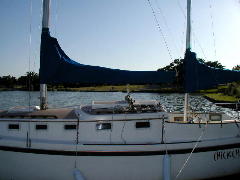
|
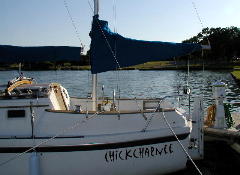
|
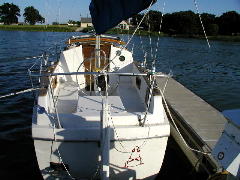
|
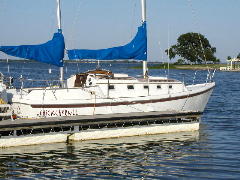
|
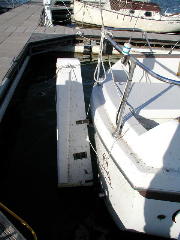
|

|
Email | Mad Mac's Home Page